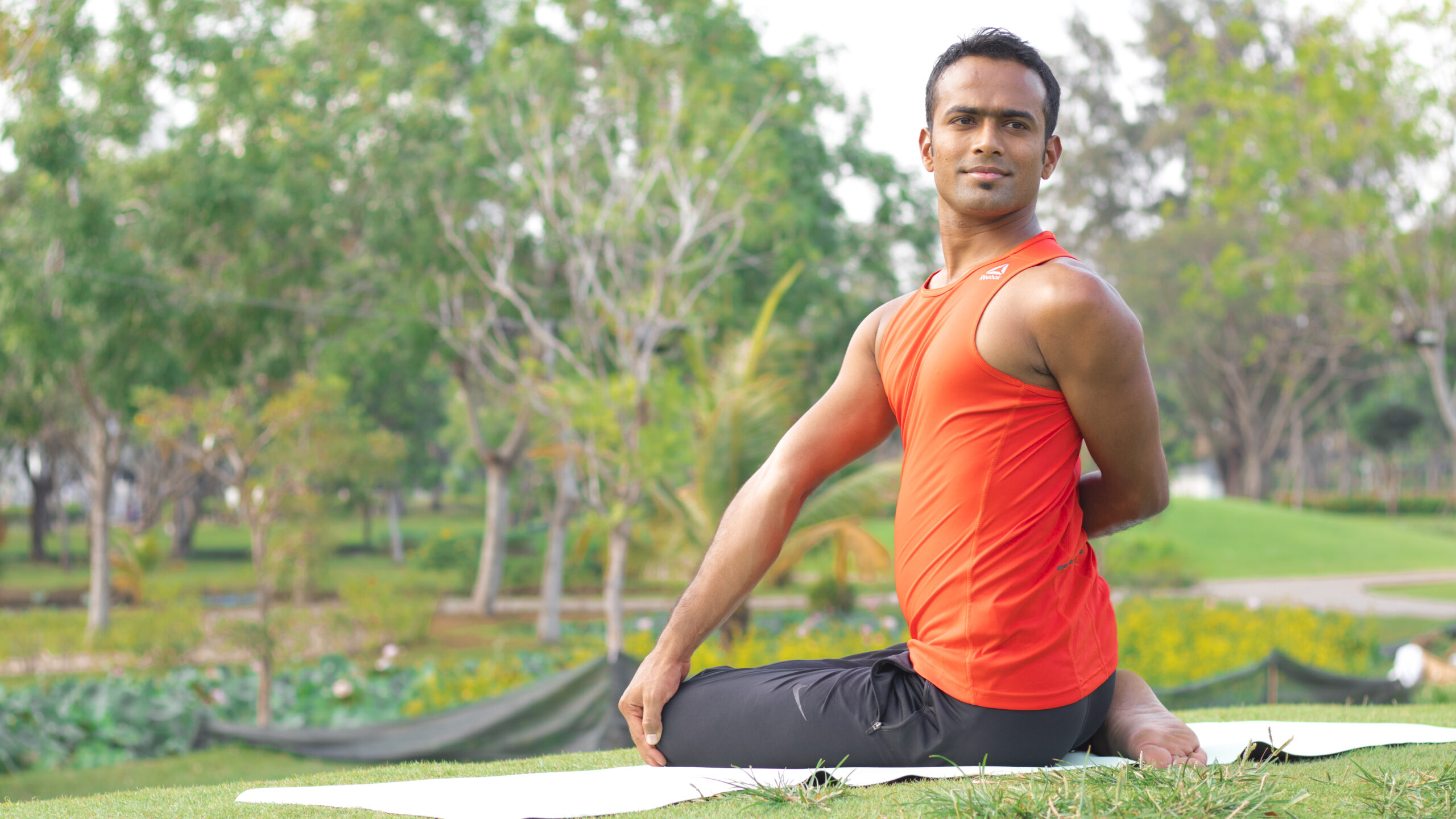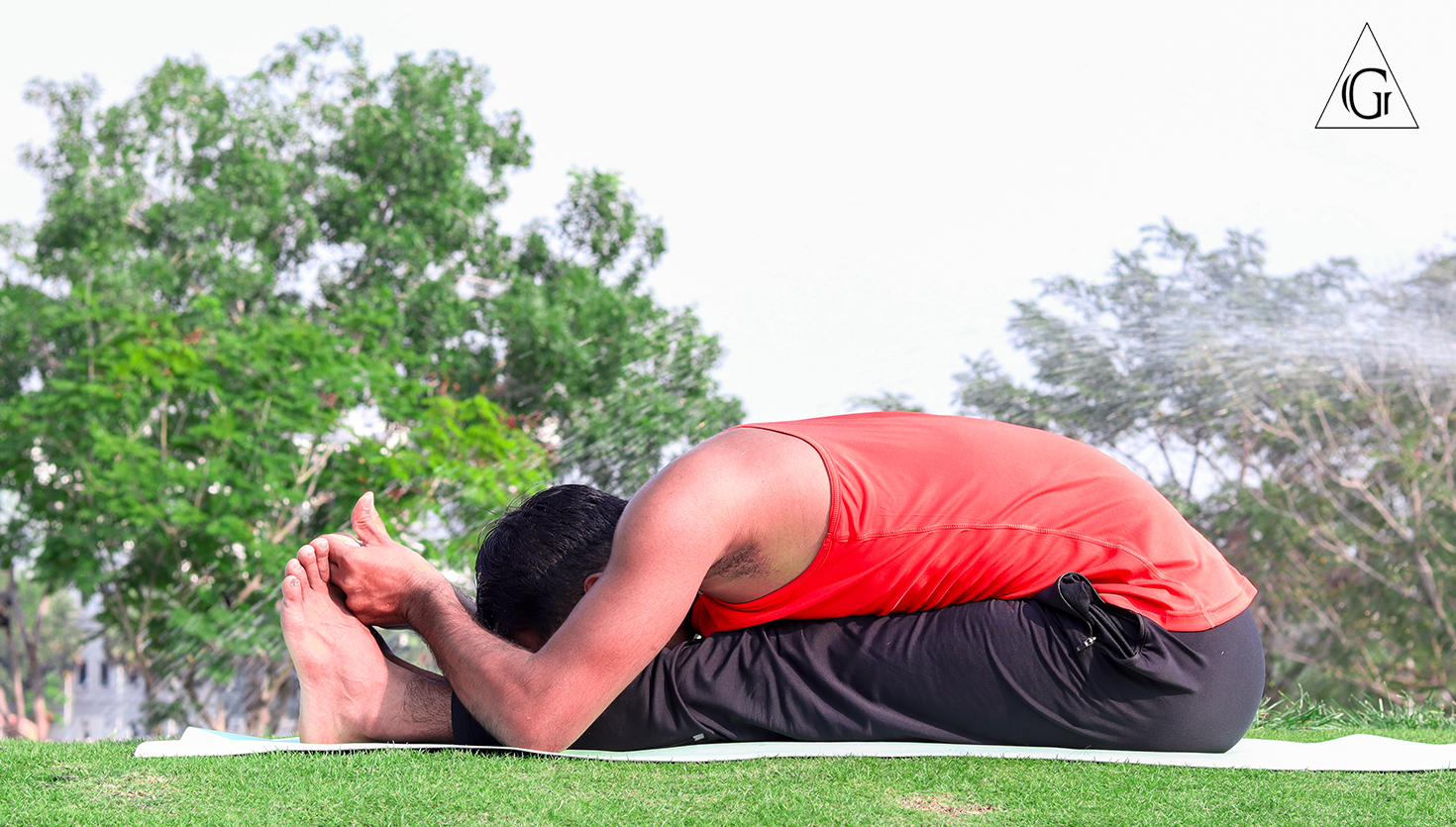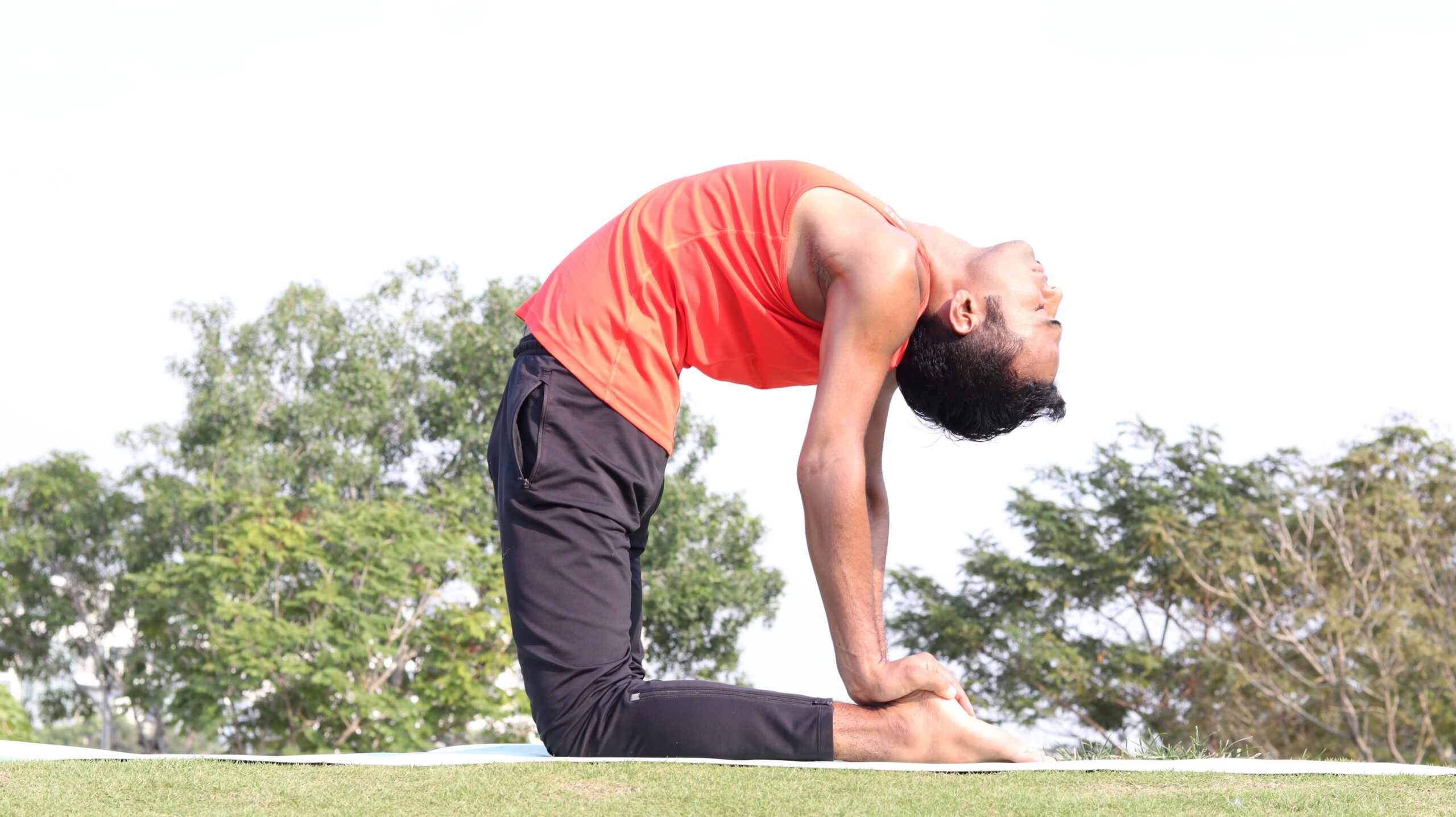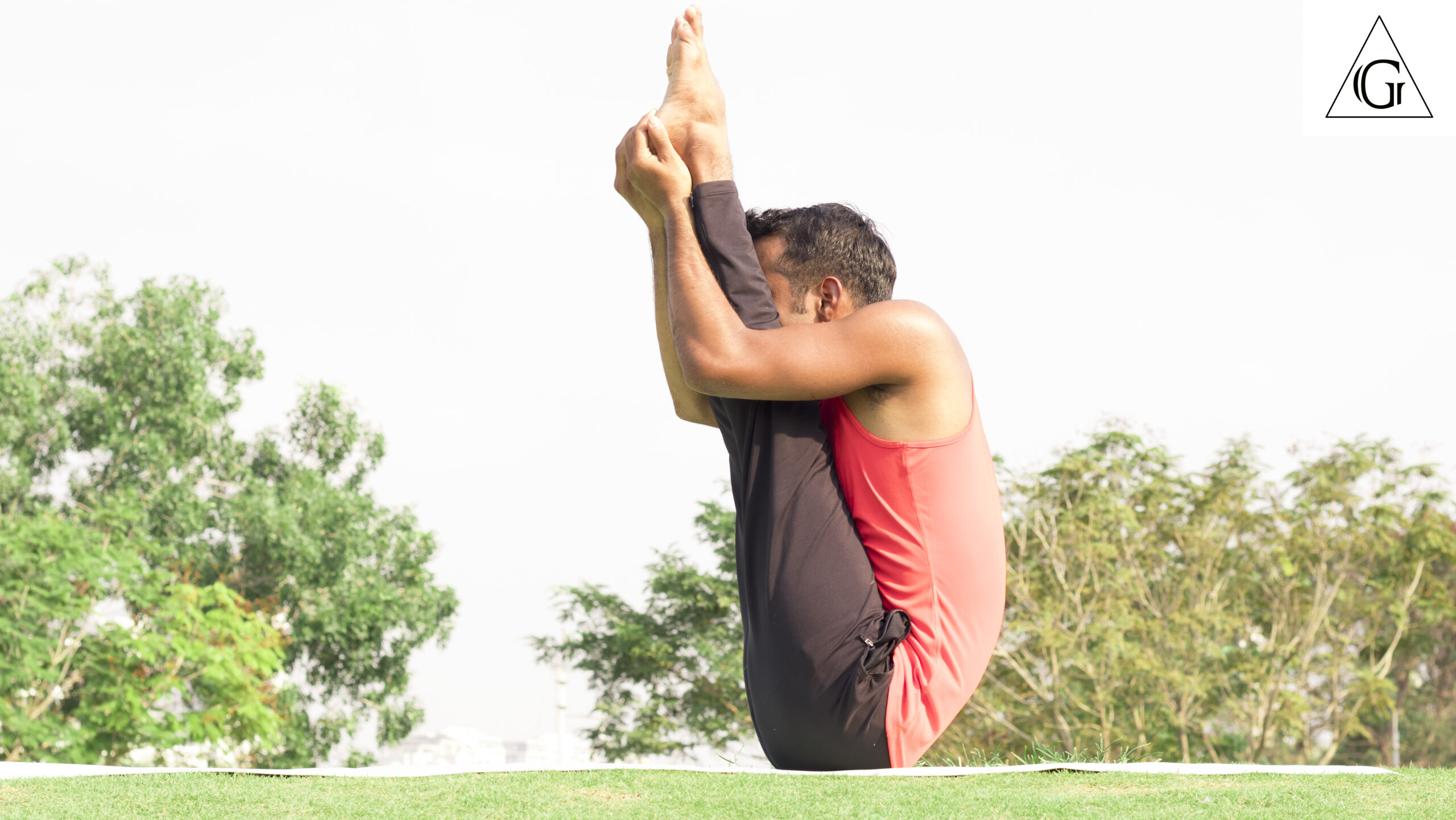Yama : includes the five ethical discipline
Ahimsa – Non-violence in action, speech and thoughts. The yogi believes that to kill or destroy a thing is to insult its creator. Men either kill for food or to protect themselves from danger. But merely because a man is a vegetarian, it doesn’t necessarily follow that he is non-voilent by temperament or that he is a yogi, through a vegetarian diet is a necessity for a practice of yoga. Its resides in a man’s mind and not in the instrument he holds in his hand. One can use a knife to pare fruit or to stab an enemy. The fault is not in the instrument, but in the user. The yogi believes that every creature has as much right to live as he has. He believes that he is born to help others and he looks upon creation with eyes of love. He puts the happiness of others before his own and become a source of joy to all who meet him. He sees all beings in the self and self in all beings and therefore he loses all fear. Through the body is subject to sickness, age , decay and death , the spirit remains unaffected. To the Yogi death is the sauce that adds zest to life. He has dedicated his mind, his reason and his whole life to the lord.
Satya – Truth is God and God is Truth Said by Mahatma Gandhi. Truthfulness in intention, truth is the highest rule of conduct or morality. As fire burns, impurities and refines gold, so the fire of truth cleanses the yogi and burns up the dross in him. If the mind thinks thoughts of truth , if the tongue speaks words of truth and if the whole life is based upon truth, then one becomes fit for union with the infinite.
Asteya – Non-stealing. Its also includes misappropriation, breach of trust, mismanagement and misuse.The yogi reduces his physical needs to the minimum, believing that if he gathers things he doesn’t really need, he is a thief. While other men crave for wealth, power, fame or enjoyment, the yogi has one craving that is to adore the lord.
Brahmacharya – Divine conduct, celibate when single, faithful when married.It is thought that the loss of semen leads to death and its retention to life. By the preservation of semen the yogi’s body develops a sweet smell. So long as it is retained , there is no fear of death. It is not necessary for one’s salvation to stay unmarried and without a house. On the contrary, all the smritis ( codes of law) recommends marriage. Without experiencing human love and happiness, it is not possible to know divine love. According to sankaracharya, , one who sees divinity in all is a brahmachari. Patanjali, however, lays stress on continence of the body, speech and mind.When one is established in brahmacharya , one develops a fund of vitality and energy, a courageous mind and a powerful intellect so that one can fight any type of injustice. The brahmachari will use the forces he generates wisely : he will utilise the physical ones for doing the work of the lord, the mental for the spread of culture and the intellectual for the growth of spiritual life. Brahmacharya is the battery that sparks the torch of wisdom.
Aparigraha – Not accumulating things unnecessarily and not desiring things that belong to others. To be free from hoarding is aparigraha. It is thus but another facet of asteya ( non-stealing). The yogi feels that the collection or hoarding of things implies a lack of a faith in god and in himself to provide for his future. By the observance of aparigraha, the yogi makes his life as simple as possible and trains his mind not to feel the loss or lack of anything. Then everything he really needs will come to him by itself at the proper time.The life of an ordinary man is filled with an unending series of disturbance and frustrations and with his reactions to them. Thus there is hardly any possibility of keeping in mind in a state of equilibrium. The Sadhaka has developed the capacity to remain satisfied with whatever happens to him. Thus he obtains the peace which takes him beyond the realms of illusion and misery with which our World is saturated. He recalls the promise given by Siri Krishna to Arjuna in the ninth chapter of Bhagavat Gita : ‘To those who worship me alone with a single-minded devotion, who are in harmony with me every moment, I bring full security. I shall supply all their wants and shall protect them for ever.
2. Niyama – Niyama are the rules of conduct that apply to individual discipline, while Yama are universal in their application. The five niyama listed by Patanjali are :
Saucha – Purity of body is essential for well being. While good habits like bathing purify the body externally, Asana and pranayama cleanse it internally. The practice of Asana tones the entire body and removes the toxins and impurities caused by over indulgence. Pranayama cleanses and aerates the lungs, oxygenates the blood and purifies the nerves. Still more important is a cleansing of the intellect (Buddhi) of impure thoughts. The impurities of the mind are washed off in the waters of bhakti (adoration). The impurities of the intellect or reason are burned off in the fire of Svadhyaya (study of the self). Besides purity of body, thought and word, pure food is also necessary. Apart from cleanliness in the preparation of food it is also necessary to observe purity in the means by which one procures it. Food should be eaten with a feeling that with each morsel one can gain strength to serve the Lord. Then food becomes pure. Whether or not to be a vegetarian is a purely personal matter as each person is influenced by the tradition and habits of the country in which he was born and bred. But, in course of time, the practitioner of yoga as to adopt a vegetarian diet, in order to attain one pointed attention and spiritual evolution. Food should be taken to promote health, strength, energy and life. It should be simple, nourishing, juicy and soothing. Character is moulded by the type of food we take and by how we eat it. Men are the only creatures that eat when not hungry and generally live to eat rather than eat to live. Besides food, the place is also important for spiritual practice.it is difficult to practise in a distant country(away from home), in a forest, in a crowded city, or where it is noisy. one should choose a place where food is easily procurable, a place which is free from insects, protected from the elements and with pleasing surroundings. Such quite ideal places are hard to find in modern times, but one can at least make a corner in one’s room available for practice and keep it clean, airy, dry, and pest-free.
Santosa – Contentment has to be cultivated. A mind that is not content cannot concentrate. The yoga feels the lack of nothing and so he is naturally content. A contented man is complete for he has known the love of the Lord and has done his duty. He is blessed for he has known truth and enjoy.
Tapas – Tapas is derived from the root ‘tap’ meaning to blaze, burn, shine, suffer pain or consume by heat. It’s therefore means a burning effort under all circumstances to achieve a definite goal in life. The whole science of character building may be regarded as a practice of Tapas. Tapas is the conscious effort to achieve ultimate union with the divine and to burn up all desires which stand in the way of his goal. Without such an aim., action and prayer has no value. Life without tapas, is like a heart without love. Without tapas, the mind cannot reach up to the Lord. Tapas is of three types. It may relate to the body, to speech or to mind. By Tapas the Yogi develops strength in body, mind and character. He gains courage and wisdom, integrity, straightforwardness and simplicity.
Svadhyaya – Sva means self and adhyaya means study or education (Study of the self). When people meet for Svadhyaya, the speaker and listener are of one mind and have mutual love and respect. The person practising Svadhyaya read his own book of life, at the same time that he writes and revises it. There is a change in his outlook on life. He start to realise that all creation is meant for bhakti (adoration) rather than for Bhoga (enjoyment) that all creation is divine, that there is divinity within himself and that the energy which moves him is the same that moves the entire universe. To make life healthy, happy and peaceful, it is essential to study a regularly divine literature in a pure place. The study of the sacred books of the world will enable the Sadhaka to concentrate upon and solve the difficult problems of life when they arise. It will put an end to ignorance and bring knowledge. Ignorance has no beginning, but it has an end. There is a beginning but no end to knowledge. By Svadhyaya, the Sadhaka understands the nature of soul and gains communion with the divine. The sacred books of the world are for all to read. Philosophy is not a language but the science of languages, the study of which will enable the student to learn his own language better. Similarly, yoga is not a religion by itself. It is the science of religions, the study of which will enable a Sadhaka the better to appreciate his own faith.
Isvara pranidhana – Dedication to the lord of one’s action. He who knows that all creation belongs to the Lord will not be puffed up with pride or drunk with power. Addiction to pleasure destroys both power and glory. From the gratification of the senses as they run after pleasures arise mocha (attachment) and lobby (greed) for their repetition. Is the senses are not gratified, then, there is Soka(sorrow). They have to be curbed with knowledge and forbearance, but to control the mind is more difficult. After one has exhausted one’s own resources and still not succeeded, one turns to the lord for help for he is a source of all power. It is at this stage that bhakti begins. In bhakti or true love there is no place for ‘I’ and ‘mine’. When the feeling of ‘I’ and ‘mine’ disappears, the individual soul has reached full growth. Actions mirror a man’s personality better than his words. The Yogi has learnt the art of dedicating all his actions to the Lord and so they reflect the divinity within him.
3. Asana – The third limb of yoga is Asana a posture. Asana bring steadiness, health and lightness of limb. A steady and pleasant posture produces mental equilibrium and prevents fickleness of mind. Asanas are not merely gymnastic exercises, they are postures. Asana can be done alone, as the limbs of the body provide the necessary weights and counter weights. By practicing them one develops agility, balance, endurance and great vitality. Asana have been involved over the centuries so as to exercise every muscle, nerve and gland in the body. The Yogi conquers the body by the practice of Asanas and makes it a fit vehicle for the spirit. A soul without a body is like a bird deprived of its power to fly. The yogi believes that his body has been given to him by the Lord not for enjoyment alone, but also for the service of his fellow men during every wakeful moments of his life. He does not consider it his property. He knows that the Lord who has given him his body will one day take it away. Asana is a state of complete equilibrium of body, mind and spirit. The Yogi frees himself from physical disabilities and mental distractions but practising Asana.He surrender his actions and their fruits to the Lord in the service of the world. His body is a temple which houses the divine spark. The needs of the body are the needs of the divine spirit which lives through the body. The Yogi does not look heaven-ward to find God for he knows that he is within, being known as the Antaratma (the inner self). His feels the kingdom of God within and without and find that heaven lies in himself. The names of the asanas are significant and illustrate the principle of evolution. Some are named after vegetation like the tree (vrksa) and the lotus (Padma), Some after insects like Locust(salabha) and the scorpion(vrschika), some after aquatic animal and amphibians like the fish(Matsya), the tortoise(kurma), the frog (bheka or manduka) or the crocodile (Nakra). Dualities like gain and loss, victory and defeat, fame and shame, body and mind, mind and soul vanish through mastery of the asanas, and the Sadhaka then passes on to pranayama, the fourth stage in the path of yoga.
4. Pranayama – Prana means breath, respiration, life, vitality, wind, energy or strength. Ayama means length, expansion or stretching. Proper regulation of life force (Prana) through certain breathing techniques. Pranayama thus express extension of breath and it controls.This control is over all the function of breathing namely inhalation or inspiration (puraka), inhalation or expiration (rechaka) and retension or holding the breath which is termed as Kumbhaka. There are two types of Kumbhaka , the first where breath is held after a full inhalation, but before exhalation begins, is known as Antara Kumbhaka. The second where the breath is held after a full exhalation, but before inhalation begins is known as Bahya Kumbhaka. Pranayama is the science of breath. It is the hub round which the wheel of life revolves. The yogis life is not measured by the number of days but by the number of his breaths. Therefore, he follows the proper rhythmic pattern of slow deep breathing. These rhythmic pattern strengthen the respiratory system, soothe the nervous system and reduce craving. As desires and cravings diminish, the mind is set free and becomes a fit vehicle for concentration. It takes a long time to learn slow, deep, steady and proper inhalations and exhalations. Master this before attempting Kumbhaka. Prana in the body of the individual(Jivatma) is part of the cosmic breath of the universal spirit(Paramatma). An attempt is made to harmonise the individual breath(pinda-prana) with the cosmic breath(brahmanda-prana) through the practice of pranayama. Therefore, the Yogi masters the science of breath and by the regulation and control of breath, he controls the mind and stills its constant movement. In the practice of pranayama the eyes are kept shut to prevent the mind from wandering. Emotional excitement affect the rate of breathing; equally, deliberate, regulation of breathing checks emotional excitement. As the very object of yoga is to control and still the mind, the Yogi first learns pranayama to master the breath. This will enable him to control the senses and so reach the state of Pratyahara. Only then will the mind be ready for concentration(dhyana).
5. Pratayahara – Taking the senses inwards.
6. Dharana – One-pointed focus.
7. Dhyana – Meditation
8. Samadhi – the highest state of consciousness.






